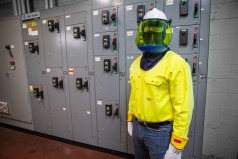
A qualified person is defined in various ways by different standards and depending on what industry you are in.
In the electrical industry, for example, it’s important for both qualified and unqualified workers to understand and receive training for the equipment they are working on. In construction, and electrical construction more specifically, codes and standards define what constitutes a qualified person in the context used within contained requirements. A key point is that workers can be qualified in one area and unqualified in another. Ultimately, it is the responsibility of the employee to understand the limitations of their qualifications and when they are not qualified to perform a particular task.
A Qualified Person is:
OSHA 1910 General Industry – One with a recognized degree or professional certificate and extensive knowledge and experience in the subject field who is capable of design, analysis, evaluation and specifications in the subject work, project or product.
OSHA 1926 Construction – One who, by possession of a recognized degree, certificate or professional standing, or who by extensive knowledge, training and experience, has successfully demonstrated his ability to solve or resolve problems relating to the subject matter, the work or the project.
As you can see above, OSHA defines the term as someone who has both a certification and industry experience. The OSHA Construction standard contains a bit more criteria for qualified persons. The key difference is demonstrating abilities related to the project or work.
These two definitions provided the basis for more specific definitions of qualified persons for the electrical industry.
NEC – One who has skills and knowledge related to the construction and operation of the electrical equipment and installations, and has received safety training to recognize and avoid the hazards involved.
NFPA 70E – One who has demonstrated skills and knowledge related to the construction and operation of electrical equipment and installations, and has received safety training to identify and avoid the hazards involved.
As you can see, the NEC and NFPA 70E definitions above do not indicate who performs the work. These standards also do not regulate a person’s qualifications or credentials since there are regulating agencies that establish requirements for industry licenses or certifications.
The NEC definition primarily relates to the ability to understand the equipment and installations covered, and how to attain compliance with NEC rules when performing installations. However, NFPA 70E, for example, outlines electrical safety training required for qualified workers. The NFPA 70E definition has been updated in the 2015 edition and includes requirements that one has demonstrated the appropriate knowledge and skillset and has received safety training to identify and avoid electrical hazards.
This revision more closely aligns the NFPA 70E definition with OSHA’s definition of a qualified person. The difference is that demonstrated knowledge and skills are necessary, but demonstrated to whom? While this is a responsibility shared by both employers and employees, the employer is responsible for assigning qualified persons to perform tasks and operations within the knowledge and skillsets. In the case of electrical safety in the workplace, it is usually the employer, as they are ultimately responsible for worker safety.
